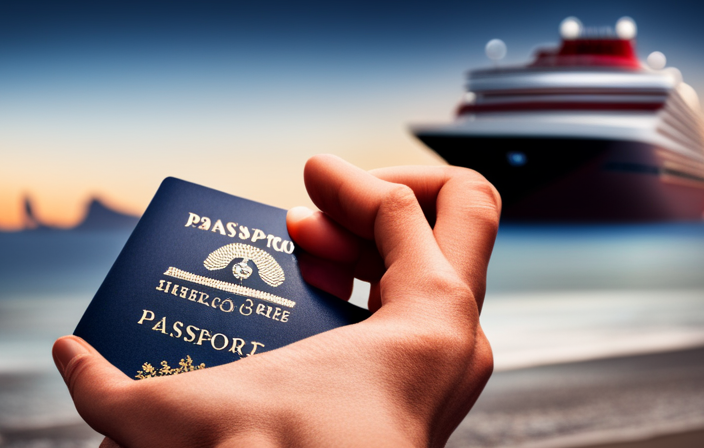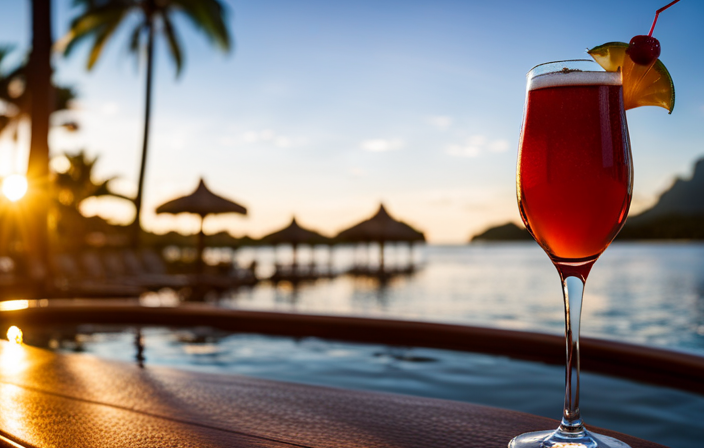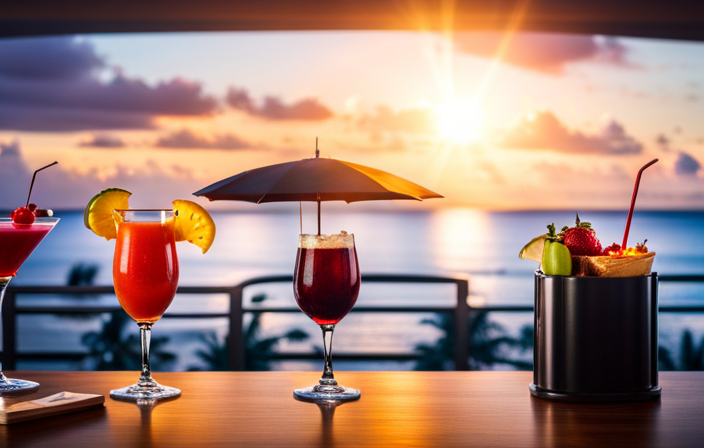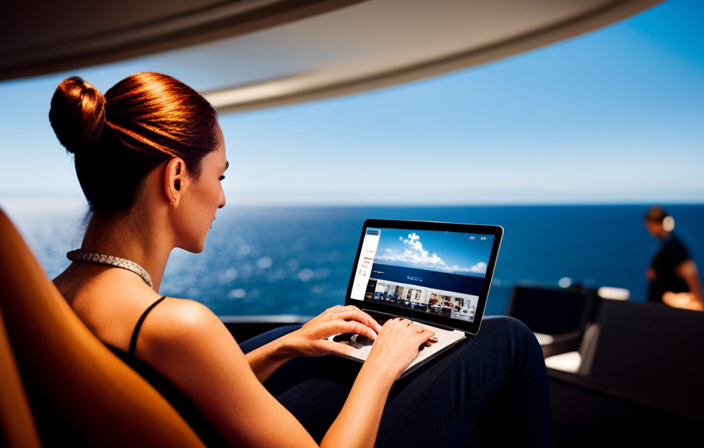Cruise News and Updates
The Evolution of Cruise Ships: From Size to Efficiency and Appeal

I’ve always been fascinated by how cruise ships have evolved through the years. It’s quite remarkable to think that just 20 or 30 years ago, most of the newly built ships had a gross tonnage ranging from 70,000 to 80,000.
But now, they’re twice as big, with an average size of 164,000 gross tons. It’s like an arms race to build the largest ship possible, with cruise lines competing for superiority.
And while there are challenges, like height restrictions and infrastructure needs, the benefits of larger ships, like lower costs and more amenities, make them incredibly appealing to both cruise lines and passengers.
Key Takeaways
- Cruise ships have become significantly larger over the years, with the average size increasing from 70,000-80,000 gross tons in the 1990s to 164,000 gross tons in recent years.
- Larger ships offer better operating efficiency, resulting in lower costs per person. Newer and bigger ships can break even on cash flow at around 35% capacity, while older and smaller ships require closer to 50% capacity.
- The transition to larger ships requires significant investment and planning, including building new terminals and infrastructure, adapting operations and itineraries, and adjusting crew training and safety protocols.
- Larger ships provide more amenities for passengers, including more restaurants, bars, lounges, event venues, and activities. They have a broader appeal, catering to different age groups and interests, and can generate free marketing for cruise lines.
Growing Ship Size: From 70,000 to 164,000 Gross Tons
From 1990 to 2000, most new cruise ships were in the 70,000-80,000 gross ton range. But from 2015 to 2020, the average gross tonnage of new cruise ships increased to 164,000 gross tons.
This growth in ship size has had a significant impact on the environment and has raised safety considerations. Larger cruise ships require more fuel and resources, leading to increased emissions and pollution. The size and weight of these ships also pose challenges in terms of maneuverability and stability, requiring advanced navigation systems and safety protocols.
Additionally, the increased number of passengers on larger ships necessitates enhanced emergency response plans and evacuation procedures. Cruise lines have been working to address these issues by implementing more sustainable practices, investing in advanced technology, and prioritizing passenger safety.
Arms Race for Bigger Ships: Competing for Superiority
I can’t help but notice that cruise lines are constantly trying to outdo each other by building larger ships. It’s a fierce competition where innovation is key.
Here are four strategies that cruise lines employ in their quest for ship superiority:
-
Pushing the boundaries: Cruise lines are always looking for ways to break records and create the largest ship in the industry. This not only attracts attention but also sets them apart from their competitors.
-
Offering unique experiences: To stand out in the crowded market, cruise lines are constantly innovating and adding new amenities and attractions to their ships. From go-kart tracks to massive casinos, these features are designed to appeal to a wide range of passengers.
-
Expanding capacity: By building larger ships, cruise lines can accommodate more passengers, increasing their revenue potential. This allows them to offer a wider range of itineraries and cater to a larger customer base.
-
Investing in technology: Cruise lines are investing heavily in new technologies to enhance the onboard experience and improve operational efficiency. From state-of-the-art navigation systems to advanced entertainment options, these innovations help to attract passengers and streamline operations.
In this competitive industry, cruise lines are constantly pushing the boundaries of ship size and offering innovative experiences to attract passengers. By investing in technology and expanding their capacity, they strive to stay ahead of the competition and provide an unforgettable cruising experience.
Size Limitations and Infrastructure Challenges
Building larger cruise ships presents challenges in terms of size limitations and infrastructure requirements.
One of the size limitations that cruise lines face is the Verrazzano-Narrows Bridge restrictions. This bridge has a height restriction that limits the size of cruise ships that can pass underneath it.
To accommodate larger ships, cruise ports like Galveston need to invest in terminal expansion. This includes building new terminals that can handle the increased size and capacity of these ships.
In addition to the physical infrastructure, cruise lines also need to adapt their operations and itineraries to accommodate larger ships. This includes adjusting crew training and safety protocols for the larger vessels.
Overall, transitioning to larger ships requires significant investment and planning to ensure a smooth and successful transition.
Transitioning to Larger Ships: Investment and Planning
To successfully transition to larger ships, significant investment and careful planning are necessary. The challenges of this transition include replacing older, smaller ships with larger vessels, building new terminals and infrastructure, and adapting operations and itineraries. Investing in crew training and adjusting safety protocols for larger vessels is also crucial.
These investment challenges require careful planning considerations to ensure a smooth transition. Cruise lines must allocate resources for the construction of larger ships and the necessary upgrades to accommodate them. They must also plan for the potential impact on their bottom line and assess the potential return on investment.
Future Outlook: Meeting Demand With Bigger Ships
The future of the cruise industry involves the continuous construction of larger vessels to meet the growing demand for more amenities and attractions. Cruise lines are investing in building bigger ships in order to stay competitive and cater to passenger preferences. However, meeting sustainability goals and minimizing environmental impact are also important considerations in the design and operation of these larger vessels.
| Meeting Sustainability | Environmental Impact |
|---|---|
| Incorporating energy-efficient technologies such as LED lighting, advanced HVAC systems, and waste management systems. | Implementing advanced wastewater treatment systems and adopting cleaner fuel alternatives to reduce emissions. |
| Using innovative hull designs and coatings to improve fuel efficiency and reduce drag. | Implementing strict environmental regulations and practices to protect marine ecosystems. |
| Investing in research and development to find sustainable solutions for waste management, water conservation, and energy consumption. | Promoting responsible tourism practices and engaging in environmental initiatives in port destinations. |
The cruise industry recognizes the importance of meeting sustainability goals and reducing its environmental impact. Cruise lines are committed to implementing sustainable practices and investing in technologies that will contribute to a more eco-friendly future. By continuously striving for improvement, the industry aims to balance the growing demand for larger ships with the need to protect the environment and ensure a sustainable future for cruise travel.
Operating Efficiency: Lower Costs With Larger Ships
With larger ships, I can enjoy more amenities and attractions while benefiting from lower costs per person due to improved operating efficiency. Here’s why:
-
Reduced operating costs: Larger ships offer better operating efficiency, resulting in lower costs per person. This means that cruise lines can offer more affordable fares while still maintaining profitability. By optimizing resources and streamlining operations, cruise lines can pass on the savings to passengers.
-
Increased passenger capacity: Larger ships have a higher passenger capacity, allowing cruise lines to accommodate more travelers. This means more opportunities to meet new people, make friends, and create unforgettable memories. The vibrant atmosphere created by a larger crowd adds to the excitement and energy on board.
-
Enhanced onboard experiences: With more space and resources, larger ships can offer a wide range of amenities and attractions. From multiple restaurants and bars to entertainment venues and recreational activities, there is something for everyone. Passengers can indulge in gourmet dining, relax by the pool, enjoy live performances, or try their luck at the onboard casino. The possibilities are endless on these floating resorts.
Abundance of Amenities: Enhancing Passenger Experience
I can’t wait to explore all the incredible amenities and attractions available on these larger ships. The cruise industry has truly embraced the concept of enhancing the passenger experience through innovative amenities and entertainment options. Let’s take a look at some of the highlights:
| Innovative Amenities | Entertainment Options |
|---|---|
| – State-of-the-art spas | – Broadway-style shows |
| – Water parks with thrilling slides | – Outdoor movie screens |
| – Virtual reality gaming experiences | – Live music performances |
| – Multi-level go-kart tracks | – Comedy clubs |
| – Onboard zip lines | – Interactive game shows |
| – Skydiving simulators | – Nightclubs and dance parties |
These larger ships offer an abundance of options to cater to every passenger’s preferences. Whether you’re seeking relaxation, adventure, or entertainment, there is something for everyone. From indulging in a spa treatment to catching a Broadway show, the possibilities are endless. The cruise industry continues to push the boundaries of passenger experience, making these larger ships a haven of excitement and enjoyment.
Broadening Appeal: Catering to Different Preferences
Catering to a variety of preferences, these larger ships offer a wide range of amenities and entertainment options for passengers to enjoy. With the goal of providing personalized experiences, cruise lines have targeted specific demographics to ensure that every passenger feels catered to.
Families with children can enjoy dedicated kids areas, waterslides, and arcades, while couples on a honeymoon have access to adults-only pools, over-the-top suites, and spas. Sports bars, fine dining options, and quieter spots with thinner crowds are available for those seeking a more relaxed atmosphere.
These mega-ships have something for everyone, from go-kart tracks to parks and massive casinos. By offering such diverse amenities, cruise lines are able to attract a broader range of passengers and create memorable experiences tailored to their preferences.
Marketing Impact: Generating Buzz and Brand Awareness
In today’s cruise industry, creating media hype and generating buzz has become an integral part of marketing strategies. Cruise lines are constantly seeking innovative ways to capture the public’s attention and increase brand awareness.
Launching a new, large ship can be a powerful tool for viral marketing. These ships, with their impressive size and state-of-the-art features, become newsworthy and attract significant media coverage. The impact of such events can give a cruise line’s marketing a substantial boost without the need for expensive advertising.
This strategy not only generates excitement among potential passengers but also showcases the cruise line’s commitment to innovation and growth. By leveraging the power of viral marketing, cruise lines can effectively reach a wider audience and entice them to book a cruise on their impressive ships.
Frequently Asked Questions
How Do Larger Ships Affect the Operating Efficiency and Costs per Person for Cruise Lines?
Larger ships improve operational efficiency by lowering costs per person. With more amenities, they enhance the passenger experience. Higher capacity and economies of scale allow cruise lines to break even at lower occupancy rates.
What Are Some Challenges and Considerations When Transitioning From Smaller Ships to Larger Ones?
Challenges and considerations when transitioning to larger ships include replacing older vessels, building new terminals, adapting operations and itineraries, adjusting crew training and safety protocols, and making significant investments.
How Does the Size of a Cruise Ship Impact the Amenities and Attractions Available to Passengers?
The size of a cruise ship greatly impacts the amenities and attractions available to passengers. With larger ships, there are more options like restaurants, bars, and event venues, creating a wider range of experiences for passengers to enjoy.
What Are Some Reasons Why Larger Ships Have a Broader Appeal to Different Age Groups and Interests?
Larger ships have a broader appeal because they cater to different age groups and interests. They offer amenities like dedicated kids areas and adults-only pools. Operating larger cruise ships can lead to better economic efficiency.
How Can Launching a New, Large Ship Generate Free Marketing and Brand Awareness for Cruise Lines?
Launching a new, large ship can generate free marketing and brand awareness for cruise lines by attracting media attention and creating buzz amongst potential passengers. It’s like setting sail on a sea of publicity.
Claire, a creative soul with an unquenchable thirst for storytelling, is an integral part of the Voyager Info team. As a dedicated writer, she weaves captivating narratives that transport readers to enchanting cruise destinations and beyond.
Claire’s love affair with writing began at an early age when she discovered the magic of words and their ability to craft worlds and emotions. Her innate curiosity led her to explore various literary genres, but it was travel writing that truly captured her heart. Drawing inspiration from her own globetrotting adventures and encounters with diverse cultures, Claire embarked on a journey to become a travel writer par excellence.
Cruise News and Updates
Safely Experience And Support The Future Of Cruises In 2021
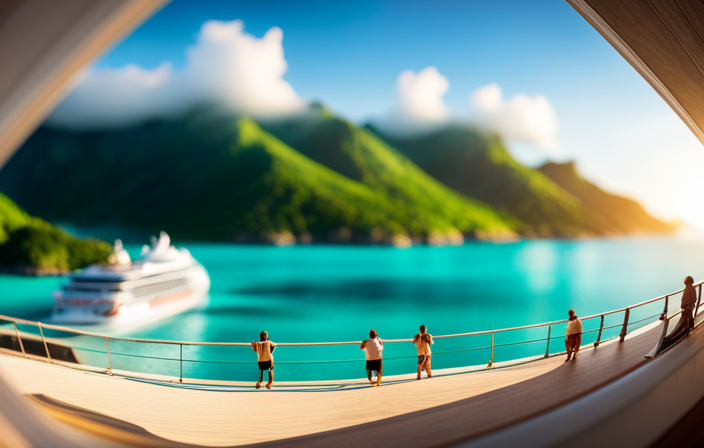
Howdy! While we make our way through the unpredictable challenges brought on by the global health crisis, the cruise industry is undoubtedly one of the hardest hit sectors. However, do not despair, fellow journey-seekers, as it appears that there is a glimmer of hope on the horizon!
In this article, we will delve into the exciting world of cruises in 2021 and explore how we can safely experience and support their future.
Like a sturdy anchor, the Centers for Disease Control and Prevention (CDC) has laid out requirements for test cruise volunteers, ensuring that we set sail with utmost caution. These requirements include being 18 years or older, fully vaccinated against COVID-19 or having no high-risk medical conditions, and agreeing to COVID-19 testing. These test cruises serve as a simulation, allowing cruise lines to fine-tune their operations and ensure the safety of both crew and passengers.
So, grab your life jackets and join me as we embark on a journey to discover the ins and outs of these test cruises. From embarkation to dining, entertainment to medical evacuation procedures, we will explore it all.
Let’s set sail and support the future of cruises in 2021!
Key Takeaways
- CDC requirements for test cruise volunteers include being 18 years or older, fully vaccinated against COVID-19 or having no high-risk medical conditions, and undergoing COVID-19 symptom evaluations before embarkation and disembarkation.
- The purpose of test cruises is to ensure safe operation during the global health crisis and simulate the passenger experience.
- Test cruises must be at least 2-7 days in duration with at least one overnight stay, and the CDC recommends a minimum voyage length of 3 days with 2 overnight stays.
- Simulated activities on test cruises include embarkation and disembarkation procedures, dining, entertainment, and medical evacuation procedures, isolation and quarantine measures, and protocols for recreational activities and shore excursions.
What is it?
I’ll explain what a test cruise is in 2021. A test cruise is a simulated voyage that cruise lines conduct to ensure safe operation despite the global health crisis. These cruises serve to test and evaluate the implementation of safety measures and protocols.
The purpose is to simulate the passenger experience and identify any areas that may need improvement. Test cruises typically last between 2-7 days, with at least one overnight stay. Safety is of utmost importance, and all volunteers must adhere to CDC requirements, such as being fully vaccinated against COVID-19 and undergoing pre and post-disembarkation COVID-19 testing.
While test cruises are not paid and cannot be part of employment conditions, volunteers have the opportunity to support the future of the cruise industry and contribute to the development of enhanced safety protocols.
Requirements for Volunteers
To volunteer for a test cruise in 2021, I must meet the CDC requirements, including being fully vaccinated against COVID-19 or having no high-risk medical conditions, and I must be willing to undergo COVID-19 testing before and after the cruise.
The evaluation process for volunteers will involve assessing their vaccination status and checking for any COVID-19 symptoms before embarkation and disembarkation.
The purpose of this evaluation is to ensure the safety of all participants and to simulate a real passenger experience. It is crucial for volunteers to comply with these requirements in order to support the future of cruises in 2021 and to help the industry operate safely amidst the global health crisis.
By following these guidelines, we can contribute to the development of effective protocols and measures that will allow cruise ships to resume operations in a responsible manner.
Test Cruise Details
The test cruises will have a duration of 2-7 days and will include at least one overnight stay. These cruises are designed to simulate the passenger experience and ensure safe operation despite the ongoing global health crisis. During the test cruises, various activities will be simulated, including embarkation and disembarkation procedures, dining, entertainment, and medical evacuation protocols.
Additionally, there will be simulated recreational activities such as casinos and spa services, as well as protocols for private-island and port of call shore excursions.
As for the sign-up process and selection for test cruises, currently, only Royal Caribbean has provided a sign-up form for volunteers. In the first week, they received 100,000 signatures. However, there haven’t been any announcements or updates regarding sign-up methods from Norwegian, Carnival, MSC, and Disney. The volunteer selection process for test cruises hasn’t been disclosed at this time.
Frequently Asked Questions
Can I bring my own food and beverages on a test cruise?
On a test cruise, passengers are not allowed to bring their own food and beverages. The cruise line provides all meals and drinks as part of the simulated passenger experience. Dietary restrictions can be accommodated upon request.
Will test cruise volunteers have access to all onboard amenities and services?
Test cruise volunteers are expected to have access to all onboard amenities and services. However, it is important to note that volunteers are not compensated for their participation in the test cruises.
Are there any restrictions on the number of passengers allowed on a test cruise?
Passenger capacity limits for test cruises are determined by the CDC. However, cruise lines that require vaccinations for passengers can bypass test cruises. Vaccination requirements are in place to ensure the safety of all participants.
How often will test cruises be conducted in 2021?
Test cruises will be conducted multiple times in 2021 as part of the cruise industry recovery and to ensure health and safety measures. The exact frequency of test cruises has not been specified.
Will test cruise volunteers be compensated in any way for their participation?
Test cruise volunteers will not be compensated for their participation. However, they will benefit from the opportunity to experience a simulated cruise, contribute to the safe operation of cruises, and help shape the future of the industry.
Claire, a creative soul with an unquenchable thirst for storytelling, is an integral part of the Voyager Info team. As a dedicated writer, she weaves captivating narratives that transport readers to enchanting cruise destinations and beyond.
Claire’s love affair with writing began at an early age when she discovered the magic of words and their ability to craft worlds and emotions. Her innate curiosity led her to explore various literary genres, but it was travel writing that truly captured her heart. Drawing inspiration from her own globetrotting adventures and encounters with diverse cultures, Claire embarked on a journey to become a travel writer par excellence.
Cruise News and Updates
How Cruise Ships Operate: Profits, Strategies, And Continuous Operation
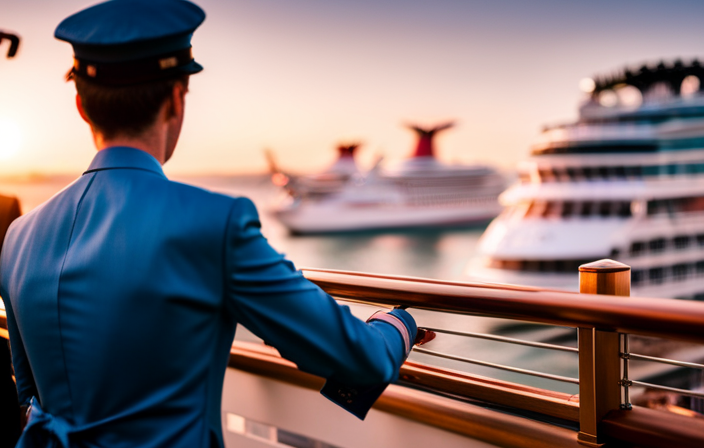
Hello! We are excited to invite you to explore the captivating world of cruise ships and learn about how they operate.
Picture this: cruise ships, those floating paradises on the sea, are not only about providing unforgettable vacations but also about generating impressive profits. In this article, we’ll explore the strategies and continuous operation that keep these magnificent vessels afloat financially.
Did you know that ticket prices for mainstream cruise lines average around $1,293? But that’s just the beginning. Additional onboard spending can add up to a whopping $429 per passenger. From casinos to spas, shopping to dining, and everything in between, cruise lines have cleverly designed their ships to maximize revenue from various sources.
But it doesn’t stop there. We’ll also uncover the secrets behind the ownership and categorization of cruise lines. From Carnival Corporation to Royal Caribbean Group and Norwegian Cruise Line Holdings, these three corporations dominate the industry with their multiple brands.
So, fasten your seatbelts (or life jackets) and get ready to embark on a journey through the intriguing world of cruise ship operations.
Let’s set sail!
Key Takeaways
- Cruise ship ticket prices include both the base fare and additional onboard spending, such as casinos, spas, shopping, dining, Wi-Fi, and drinks.
- Main sources of profit for cruise lines are casinos, spas, shopping, dining, Wi-Fi, and drinks.
- Placement of common areas like lounges, bars, and casinos strategically along passenger routes helps generate more revenue.
- Cruise lines employ various profit-making strategies, such as making most of the money upfront for premium cruise lines and catering to passengers who spend more time in ports for luxury cruise lines.
How They Make Money
I make money by offering various sources of entertainment and amenities on board, such as casinos, spas, shopping, dining, Wi-Fi, and drinks. These are the key sources of profit for cruise lines. Onboard revenue sources are crucial in generating income for the company.
Passengers spend money on these amenities and entertainment options, contributing to the overall profitability of the cruise line. Additionally, we generate revenue through passenger spending on private islands. By leasing private islands from foreign countries, we provide passengers with unique experiences, such as complimentary beach chairs and BBQ lunches. This not only enhances their vacation but also increases their spending on the island.
These onboard revenue sources and passenger spending on private islands play a significant role in ensuring the financial success of the cruise line.
Continuous Operation Process
Year-round, cruise liners tirelessly navigate the seas, seamlessly switching regions during repositioning cruises, and swiftly preparing for the next voyage on turnaround day. Crew management plays a crucial role in ensuring continuous operation. Cruise lines hire crew members from foreign countries, allowing them to save costs while maintaining a diverse and efficient workforce. These crew members work tirelessly to provide exceptional service to passengers, ensuring their comfort and satisfaction throughout the voyage.
Repositioning cruises are another aspect of continuous operation. These cruises occur when ships move from one region to another, often during seasonal changes. During repositioning cruises, cruise lines take the opportunity to offer unique itineraries and experiences to passengers. This allows them to generate additional income while optimizing the usage of their fleet.
Incorporating a 3 column and 5 row table:
| Continuous Operation Process | |
|---|---|
| Year-round operation | Without breaks |
| Repositioning cruises | Ships switch regions |
| Turnaround day | Quick disembarkation and preparation for the next cruise |
| Crew management | Hiring crew members from foreign countries |
| Additional income | Visiting multiple ports |
Ownership and Categorization
Carnival Corporation, Royal Caribbean Group, and Norwegian Cruise Line Holdings are the three corporations that own multiple cruise line brands. These corporations have a complex ownership structure, with each owning several cruise lines that cater to different market segments.
Carnival Corporation, for example, owns popular mainstream brands such as Carnival Cruise Line and Princess Cruises, while Royal Caribbean Group owns premium brands like Royal Caribbean International and Celebrity Cruises. Norwegian Cruise Line Holdings, on the other hand, owns Norwegian Cruise Line, which falls into the mainstream category.
Differentiation factors play a crucial role in the ownership structure. Each corporation strategically positions its cruise line brands to cater to different types of passengers. This allows them to capture a wider market share and maximize profits.
From mainstream to luxury, these corporations have created a diverse range of cruise lines that offer unique experiences and amenities. By offering different levels of service, accommodations, and onboard activities, they are able to attract and retain passengers with varying preferences and budgets.
The ownership and categorization of cruise line brands play a significant role in the overall profitability and success of these corporations.
Frequently Asked Questions
How do cruise ships handle medical emergencies and provide medical care to passengers on board?
Cruise ship medical facilities are equipped to handle medical emergencies. The crew receives emergency response training, and medical personnel are available on board. Passengers can receive medical care and treatments while at sea.
What safety measures are in place to prevent accidents or incidents on cruise ships?
Cruise ship safety measures include thorough training for crew members, regular safety drills, strict adherence to international safety regulations, advanced navigation systems, surveillance cameras, and emergency response protocols to prevent accidents and incidents onboard.
How do cruise ships handle waste management and environmental sustainability?
Ah, waste management and environmental sustainability, the unsung heroes of cruising. Cruise ships tackle these challenges through advanced waste treatment systems, recycling programs, and energy-efficient technologies, ensuring a greener voyage for all.
What is the process for hiring and training crew members on cruise ships?
The hiring process for crew members on cruise ships involves recruiting from foreign countries, conducting interviews and background checks, and providing training in various areas such as safety, customer service, and emergency procedures.
How do cruise ships handle security and ensure the safety of passengers and their belongings?
Cruise ship security is a top priority, ensuring passenger safety and protecting their belongings. Vigilant surveillance systems, trained security staff, and strict access control measures are implemented to prevent incidents and swiftly respond to emergencies.
Claire, a creative soul with an unquenchable thirst for storytelling, is an integral part of the Voyager Info team. As a dedicated writer, she weaves captivating narratives that transport readers to enchanting cruise destinations and beyond.
Claire’s love affair with writing began at an early age when she discovered the magic of words and their ability to craft worlds and emotions. Her innate curiosity led her to explore various literary genres, but it was travel writing that truly captured her heart. Drawing inspiration from her own globetrotting adventures and encounters with diverse cultures, Claire embarked on a journey to become a travel writer par excellence.
Cruise News and Updates
The Fascinating World Of Cruise Ships: Size, Power, And Environmental Impact
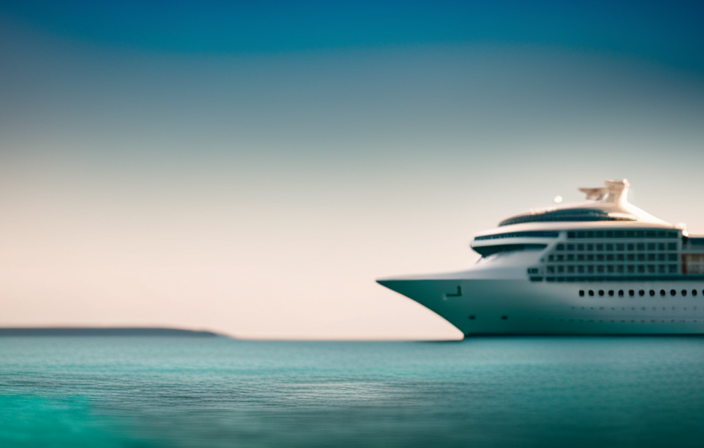
Oh, the world of cruise ships. It’s a mesmerizing realm, filled with magnificent vessels sailing the vast oceans, taking passengers to distant, enchanting locations.
The sheer size and power of these floating marvels never fail to astound me. From their towering lengths, ranging from 900 to 1,100 feet, to their impressive fuel tanks, holding a staggering 1 to 2 million gallons of fuel, cruise ships are a testament to human engineering. Some even harness the energy of liquefied natural gas, with engines so colossal they could fill a room. It’s truly awe-inspiring.
Yet, amidst this marvel, we must also consider the environmental impact. Many cruise lines still rely on diesel-powered engines, but the use of LNG reduces carbon emissions by a significant 30%.
As a passionate traveler and writer, I am eager to delve into the fascinating world of cruise ships, exploring their size, power, and environmental impact. Join me as we embark on this journey of discovery and exploration.
Key Takeaways
- Cruise ships are massive vessels that can range in length from 900 to 1,100 feet.
- Some cruise ships use liquefied natural gas (LNG) as fuel, reducing carbon emissions by 30%.
- The environmental impact of cruise ships, particularly diesel-powered engines, is a concern and contributes to air pollution and climate change.
- The adoption of sustainable cruise practices, including the use of LNG fuel, is crucial for a more sustainable future and to mitigate the environmental impact of cruise ships.
Cruise Ship Specifications
Cruise ship specifications are an important aspect to consider when understanding their size, power, and environmental impact. These massive vessels can range in length from 900 to 1,100 feet, accommodating thousands of passengers and crew members.
Fuel consumption is a significant consideration, with cruise ships typically carrying 1-2 million gallons of fuel in their tanks. Some ships are now incorporating LNG tanks, which reduce carbon emissions by 30%.
The shipbuilding process is a complex endeavor, with engines playing a crucial role in powering these floating cities. Cruise ships are equipped with 4-6 engines, each generating an impressive 18.5 megawatts of power. These engines, measuring up to 45 feet in length and 27 feet in height, propel the ship at an average speed of 18-22 knots.
Additionally, cruise ships are equipped with two anchors weighing 10-20 tons each, ensuring stability while at port.
Engine and Power Details
When it comes to engine and power details, it’s important to consider the environmental impact and the need for alternative fuel sources.
Cruise ship propulsion plays a crucial role in determining the ship’s fuel efficiency and carbon emissions. Most cruise ships are equipped with 4-6 engines, each generating 18.5 megawatts of power. These engines can measure up to 45 feet in length and 27 feet in height.
While many cruise lines still rely on diesel-powered engines, there is a growing shift towards using liquefied natural gas (LNG) as a more environmentally friendly fuel source. LNG-powered ships can reduce carbon emissions by up to 30%.
As the cruise industry continues to evolve, it’s crucial for shipbuilders and operators to prioritize fuel efficiency and explore sustainable propulsion options to minimize their environmental impact.
Environmental Impact
As an enthusiast of the cruise industry, I am deeply concerned about the ecological consequences of traditional diesel-powered engines commonly used on cruise ships. Cruise ship emissions have a significant impact on the environment, contributing to air pollution and climate change. However, there are sustainable cruise practices being implemented to address these concerns. One such practice is the use of LNG-powered fuel, which reduces carbon emissions by 30% compared to diesel. This is a positive step towards minimizing the environmental impact of cruise ships.
To visualize this information, here is a table highlighting the environmental impact of cruise ship emissions:
| Environmental Impact | Consequences |
|---|---|
| Air pollution | Increased respiratory |
| problems | |
| Climate change | Rising sea levels |
| and extreme weather |
By adopting sustainable cruise practices and transitioning to cleaner fuel sources like LNG, cruise ships can help mitigate their environmental footprint and contribute to a more sustainable future.
Frequently Asked Questions
What are some popular destinations for cruise ships?
Top rated cruise ship destinations include the Caribbean, Mediterranean, Alaska, and the Baltic Sea. These locations offer stunning scenery, cultural experiences, and a variety of activities. The cruise industry is adopting eco-friendly practices to reduce its environmental impact.
How many passengers can a typical cruise ship accommodate?
A typical cruise ship can accommodate thousands of passengers, resembling a floating city. With various cruise ship designs catering to different market segments, the cruise ship market continues to evolve to meet the needs of travelers worldwide.
What are some unique amenities or features found on modern cruise ships?
Luxury accommodations and innovative dining experiences are some unique amenities found on modern cruise ships. Passengers can enjoy spacious suites, private balconies, gourmet restaurants, and specialty dining options that cater to various tastes and dietary preferences.
How do cruise ship companies ensure the safety and security of their passengers?
Cruise ship companies ensure the safety and security of their passengers through various measures. They have well-equipped medical facilities onboard and conduct regular emergency drills to prepare passengers for any potential emergencies that may arise during their voyage.
What are some common activities or entertainment options available on cruise ships?
Cruise ships offer a wide range of activities and entertainment options. From gourmet dining experiences to luxurious onboard spa and wellness facilities, passengers can indulge in relaxation and enjoy a variety of amenities during their cruise vacation.
Claire, a creative soul with an unquenchable thirst for storytelling, is an integral part of the Voyager Info team. As a dedicated writer, she weaves captivating narratives that transport readers to enchanting cruise destinations and beyond.
Claire’s love affair with writing began at an early age when she discovered the magic of words and their ability to craft worlds and emotions. Her innate curiosity led her to explore various literary genres, but it was travel writing that truly captured her heart. Drawing inspiration from her own globetrotting adventures and encounters with diverse cultures, Claire embarked on a journey to become a travel writer par excellence.
-

 Cruise FAQs3 days ago
Cruise FAQs3 days agoHow To Turn On Cruise Control Tesla Model 3
-

 Cruise FAQs3 months ago
Cruise FAQs3 months agoWhat Is The Weather Like On A Transatlantic Cruise In April
-

 Cruise FAQs3 days ago
Cruise FAQs3 days agoHow To Set Cruise Control Tesla Model Y
-

 Cruise FAQs3 months ago
Cruise FAQs3 months agoHow to Contact Someone on a Carnival Cruise Ship
-
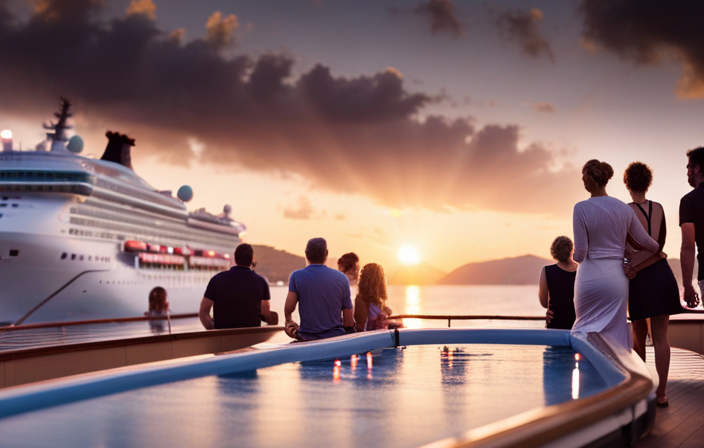
 Cruise Lines3 months ago
Cruise Lines3 months agoWhat Is The Average Age Of Passengers By Cruise Line
-

 Onboard Experience1 week ago
Onboard Experience1 week agoFinding Deals On Unsold Cruise Cabins: Tips And Strategies
-
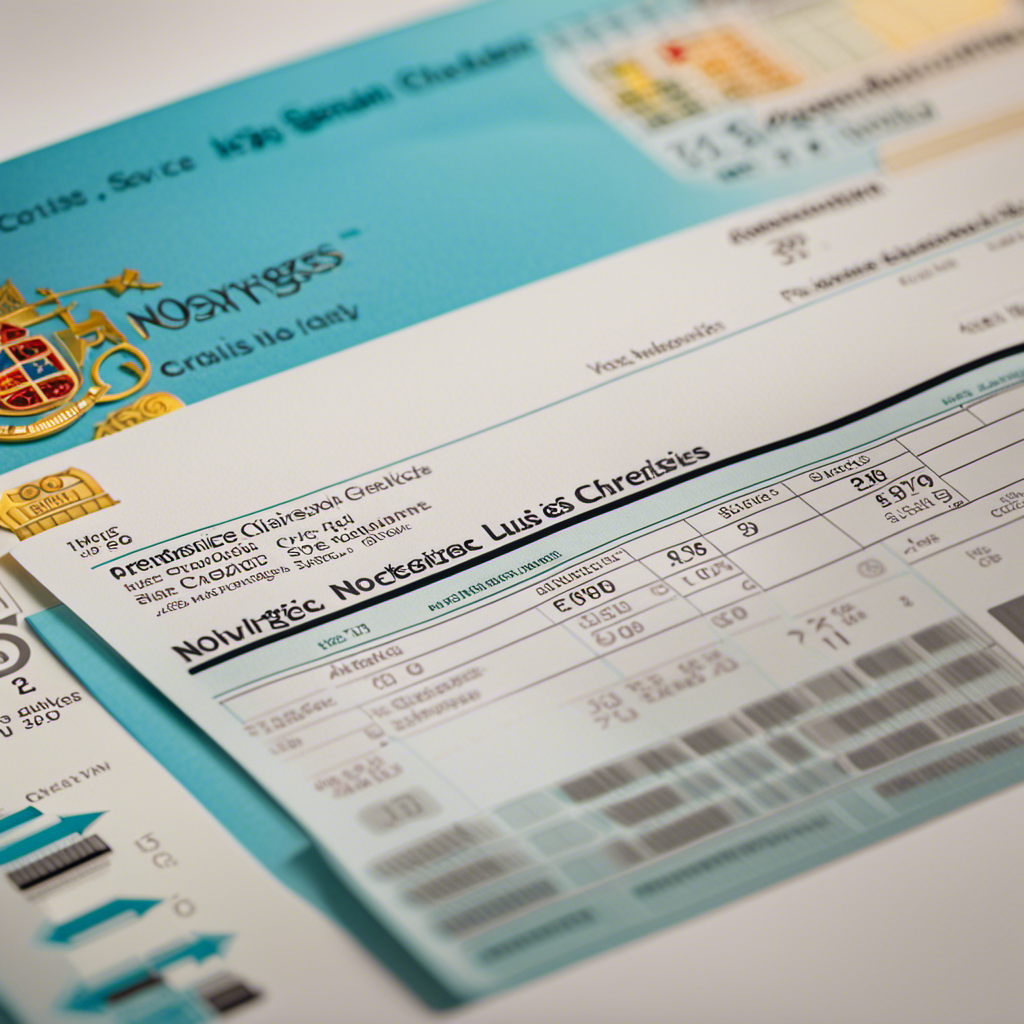
 Cruise Lines3 months ago
Cruise Lines3 months agoDecoding Norwegian Cruise Line’s Gratuities and Service Charges
-
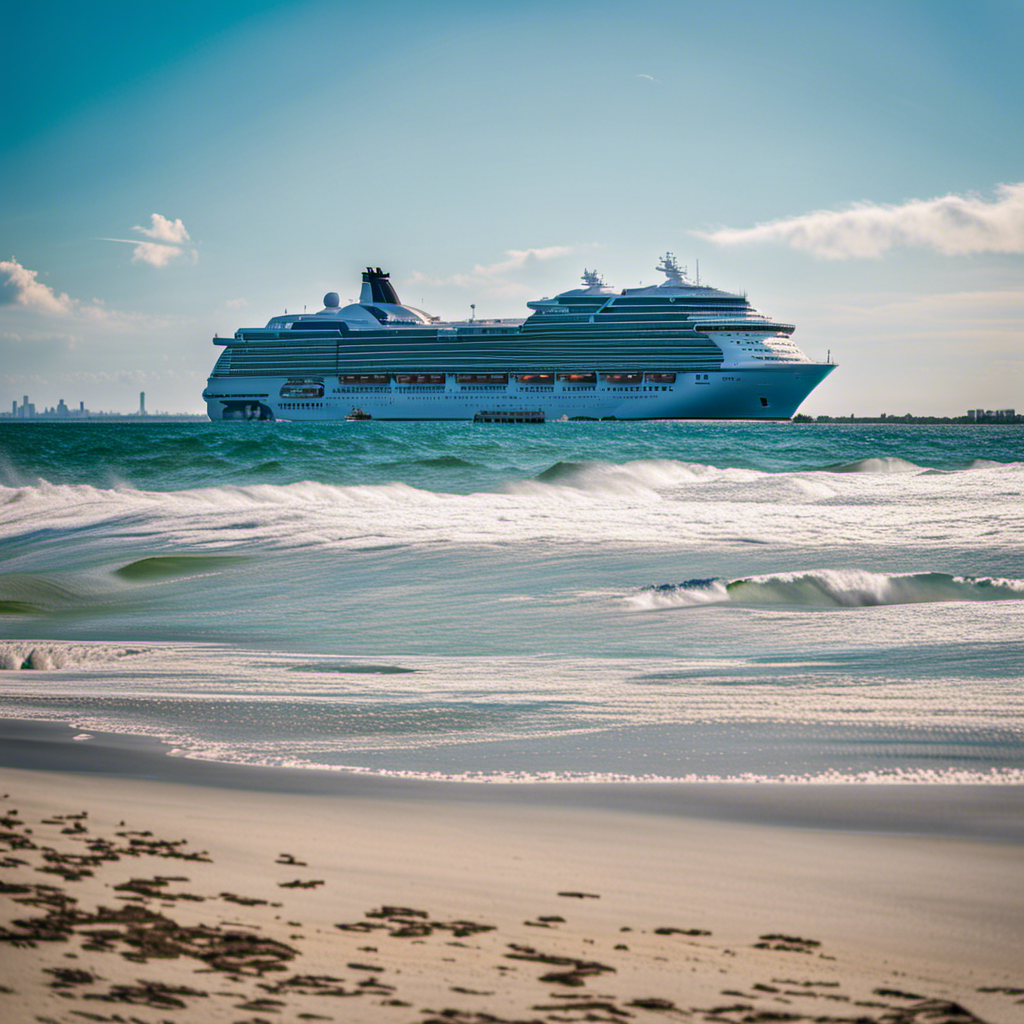
 Cruise Lines3 months ago
Cruise Lines3 months agoWhat Cruise Lines Depart From North Carolina







